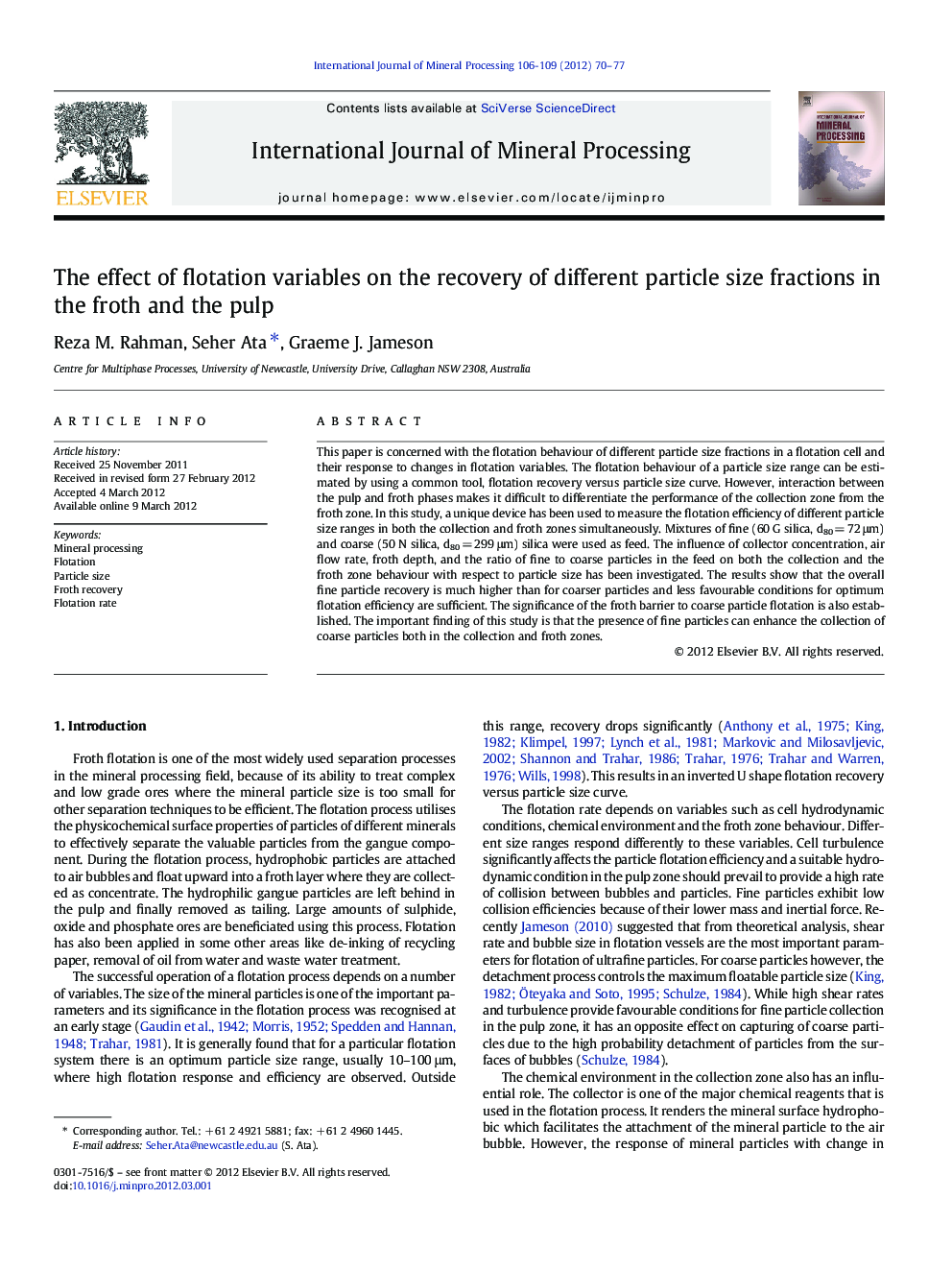| Article ID | Journal | Published Year | Pages | File Type |
|---|---|---|---|---|
| 214165 | International Journal of Mineral Processing | 2012 | 8 Pages |
This paper is concerned with the flotation behaviour of different particle size fractions in a flotation cell and their response to changes in flotation variables. The flotation behaviour of a particle size range can be estimated by using a common tool, flotation recovery versus particle size curve. However, interaction between the pulp and froth phases makes it difficult to differentiate the performance of the collection zone from the froth zone. In this study, a unique device has been used to measure the flotation efficiency of different particle size ranges in both the collection and froth zones simultaneously. Mixtures of fine (60 G silica, d80 = 72 μm) and coarse (50 N silica, d80 = 299 μm) silica were used as feed. The influence of collector concentration, air flow rate, froth depth, and the ratio of fine to coarse particles in the feed on both the collection and the froth zone behaviour with respect to particle size has been investigated. The results show that the overall fine particle recovery is much higher than for coarser particles and less favourable conditions for optimum flotation efficiency are sufficient. The significance of the froth barrier to coarse particle flotation is also established. The important finding of this study is that the presence of fine particles can enhance the collection of coarse particles both in the collection and froth zones.
► A unique device is developed to determine the recovery of collection and froth zones simultaneously. ► The coarse particles are more prone to detachment in the froth phase. ► The presence of fine is essential for enhancement of the coarse particle flotation. ► The froth zone acts as a significant barrier to the recovery of coarse particles in the concentrate.
